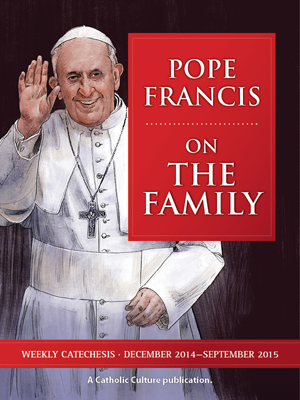A Church dragged kicking and screaming into the 21st century
By Dr. Jeff Mirus ( bio - articles - email ) | May 28, 2021
In Phil Lawler’s brilliant two-part commentary (Beware when Church leaders manipulate the language—Part I and Part II), he contrasts the emphasis of Pope Francis on developing a synodal process throughout the Church with the emphasis of Blase Cardinal Cupich on derailing a synodal process when it comes to withholding the Eucharist from those who publicly advocate abortion. This is worth even more discussion.
For consider: In most parts the world, which bishops will typically advocate most strongly for a synodal process of Church governance? As envisioned so far within the Church as a whole, this would be a form of governance which begins with local discussions and local identification of problems and then passes the results of these deliberations up through “higher” stages of discussion until policies can be formulated in Rome which will be (a) better informed, and (b) embraced the more readily throughout the Church. In my lifetime (first thinking about Church problems seriously in the mid-1960s), this approach has always been favored by those who oppose specific teachings of the Church. And where is this process, conceived in precisely this way, being most fully implemented today? In Germany, along its “synodal path”.
But as Phil noticed, this general strategy of synodality is only selectively advocated even by its proponents. Clerics such as the high-ranking Blase Cardinal Cupich promote it only when it promises to be a path toward the approval of their own ideas. For deeply secularized Church leaders, in fact, you can lay it down as an axiom that synodality is perceived as a “tactic from below” to change the Church in accordance with the spirit of the times. Any attempt to engage such Churchmen in a vigorous episcopal discussion which is likely to spiral out of their control will cause them to find fault immediately with such a synodal method, claiming that there is insufficient consensus for a fruitful discussion. It’s a strategy, in other words, to be used or rejected based on its foreseen results.
But the word “synod” came through Greek and Latin to Middle English from two words whose roots mean forging a “way together”. So a synod is a kind of “meeting”, in the full sense of that word. Before proceeding with an exploration of the abuse of synodality, therefore, I should make two clarifications.
Good synodality, bad synodality
First, in the case of a discussion of “eucharistic coherence”, which is planned for the next meeting of the USCCB, it has rightly been pointed out that episcopal conferences cannot bind individual bishops in the disciplinary measures they adopt in their own dioceses. (“Eucharistic coherence” refers to the Church’s obligation to enforce policies governing the reception of Communion which mirror a coherent Catholic understanding of the Eucharist.) But an alleged lack of consensus is no reason not to have a discussion, if only to help the individual bishops clarify in their own minds what they think would be the best way to proceed—not to mention the ordinary human desire to see if there might not be considerable episcopal support for taking a position which is sure to be wildly unpopular in the larger culture. In other words, the inability of the Conference to bind individual bishops is hardly an argument against the ability of the Conference to provide a forum for exploring the problem more deeply.
Call this a synodality in the service of the Faith, not synodality as a socio-political tactic.
Second, in my discussions of synodality I always try to explain that a proper understanding of the term is as a means to strengthen the Church at every level. A properly synodal Church is a Church firing on all cylinders, in which churchmen communicate with each other about the common problems they face, growing both in the depth of their analysis and in the strength of their commitment to a proper fulfillment of their ecclesiastical offices. Thus they begin to take a proactive responsibility for the good of their local churches, without simply following specific instructions from Rome—as if they are merely branch managers in a corporation. There are a great many examples from Church history in which regional synods have met to probe common problems and figure out what to approve and what to condemn, and how best to increase the health of the Church in that region.
Call this synodality to make the Church more fully herself, not synodality to eliminate her Divine character.
Unfortunately, the Vatican pattern for “synodality” under Pope Francis (as exemplified by the recent annual synods in Rome and by the plan for the implementation of Laudato Sì, discussed in Phil’s Part I) has been along the lines of bubbling up a thousand different concerns, with few on-the ground solutions, so that the Pope can give voice to these concerns with little effective prioritization. We might give this process points for discussion, much as a teacher might reward students in class. But it is hard, at least for me, to discern how this formidable comprehensive process has made the Church more fully herself.
Kicking and screaming
In fact, we have seen in recent synods as much concern about who was controlling the agenda as about the real problems that only courage and intelligence in the service of Faith can solve. So too with Cardinal Cupich, who is suddenly fantastically concerned that no discussions should be held that cannot be brought to the conclusion he himself desires. What we are really witnessing, I think, is the intense pain of an ecclesiastical community being dragged kicking and screaming into the twenty-first century.
In the modern period, until the early 1960s, bishops and priests could count on a fairly broad public consensus on basic morality as enshrined in the natural law, and could similarly count on an atmosphere of respect for their positions and their spiritual authority, even if these were somewhat increasingly honored in the breach. I don’t mean that the Catholic universities were rock solid; they had already been more or less secretly succumbing to Modernism during the preceding generation. But despite some rifts, there was still a general cultural consensus concerning the Western moral and spiritual tradition. And there was still something of a moral seriousness or at least a respect for conventional pieties in the aftermath of two world wars.
But by the 1960s, the brittle formality of that consensus was shattered by an easy and all but unresisted explosion of an amoral secularism. As I have often put it, the vast majority of people adhered to conventional principles that they no longer really understood, and that certainly were no longer rooted in a living Catholic or Christian faith. In consequence, they gave way rapidly to a pervasive materialism. Ever since then, the Church has been in a crisis (a crisis which the Second Vatican Council did not fully recognize and was too late to resolve), so that even “Vatican II” (the event, not the texts) became an excuse for what was, almost literally, the throwing out of the baby with the bathwater.
Or call it the progressive elimination of the impediment of Jesus Christ.
Catholic university faculties throughout the West came out into the open to justify the shifts in the larger secular culture. And almost overnight, Catholic ecclesiastics went from being highly respected socio-political “players” to symbols of an outmoded system which had very much seen its day. Since that time, the Catholic Church, as represented by her bishops, has been dragged kicking and screaming into a new century in which she is no longer accepted as part of the regnant order, no longer respected, in fact no longer welcome at all.
Many have tried to stay in favor by betraying Christ, but let me add, if you think this is too strong, that this bald statement is not nearly strong enough. In the religious orders, the universities, the seminaries, the priesthood, the episcopate, and throughout the not uncommonly corrupt powers that be in Rome, we have seen continuing evidence of a Church that would rather become less than what she is than be considered less than what she was.
In the affluent West, as a rule, we have not for a long time seen the Church being herself, identified with the Crucified, and willing to suffer. We have instead seen a Church constantly shouting, in statement after bureaucratic statement, that she can be trusted to fit in, that she is more than willing to champion all the popular causes, that she is just fine with ignoring all the popular sins—only drawing a few rather blurry lines as infrequently as possible. But of course the world keeps pushing her to give up more and more of her identity. She should have already found that this is an impossible path, but she has not yet consistently found it impossible even at the highest levels.
I do not mean to deny the tremendous consolation we have received from those bishops and priests who have remained Catholic to the core, and continued to minister to a struggling laity. But it is this widespread weakness and betrayal that I am referring to when I describe a Church dragged kicking and screaming into the twenty-first century.
Call the screaming a craven assurance of her compliance, and the kicking a series of self-inflicted wounds.
All comments are moderated. To lighten our editing burden, only current donors are allowed to Sound Off. If you are a current donor, log in to see the comment form; otherwise please support our work, and Sound Off!
-
Posted by: Randal Mandock -
May. 29, 2021 4:45 PM ET USA
I believe there is light at the end of this dreary tunnel. I have been making the point for several years in this forum that the cure for our 21st-century woes lies in the independent Catholic schools. I've said that the answer is available to anyone who would ask. After 5 years in retirement, I was just asked to revitalize a formerly liberal independent Catholic school. The plan that I created 15 years ago will be implemented. My hope is that this will be the pilot for a new school order (NSO)
-
Posted by: miketimmer499385 -
May. 29, 2021 11:38 AM ET USA
Not too strong indeed, very powerful and true by you both. I've commented at other sites, some secular, that Biden as President has put the bishops as a group in a vise of their own making and this will be embarrassing and messy. As to academia and the Church, look no further than Theodore Hesburgh for the willing(?) point man to lead the way; see Wilson Micamble's "American Priest." Perhaps Biden/Pelosi/Kaine are God's gift to the Church at this moment. And who's fooled by Cupich's veneer?
-
Posted by: altoidnews7416 -
May. 28, 2021 9:55 PM ET USA
"Or call it the progressive elimination of the impediment of Jesus Christ." Woe unto us for thinking Jesus Christ is an impediment to our way of thinking and doing things. But it's sadly true. It's just painful to my heart to read it in those terms.








